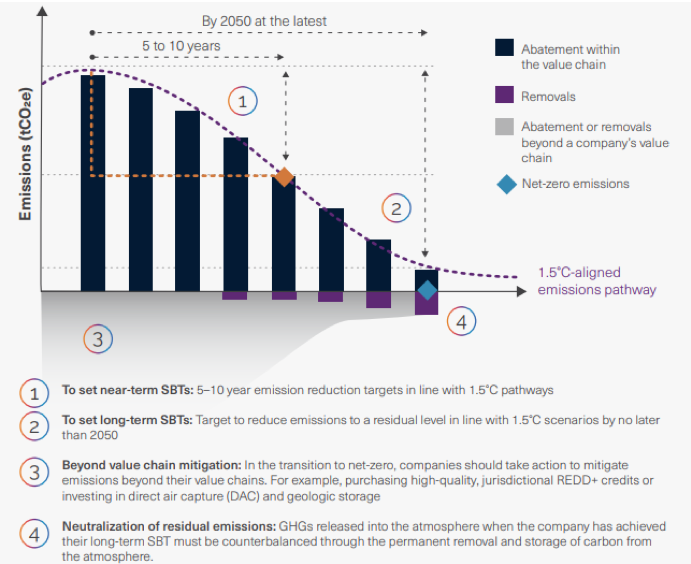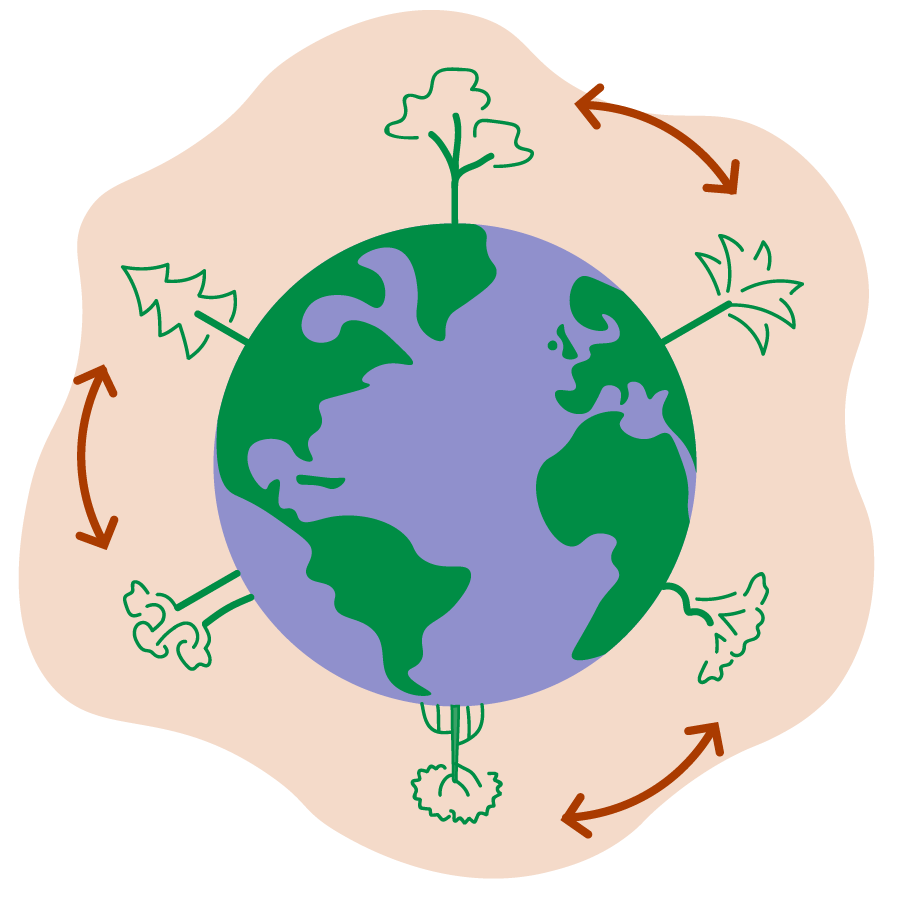https://iscmee.eu-science.com/
It is becoming increasingly clear that climate action must go hand in hand with sustainable development, biodiversity conservation and the empowerment of communities on the frontlines of climate change. This holistic approach is essential to ensure that climate action is effective, sustainable and adaptable to local contexts. Hence, carbon projects should aim not only to avoid negative impacts, but also to generate positive benefits for the environment and local stakeholders. Project co-benefits can include the positive environmental, economic, social, and cultural impacts of a project, and are often linked to the UN Sustainable Development Goals (SDGs), which provide a comprehensive framework for addressing global challenges.
There are a growing number of certification standards that allow project developers to showcase their contributions to sustainable development. These include carbon standards that directly integrate SDG reporting, such as the Gold Standard and the Verified Carbon Standard (VCS), and stand-alone co-benefits standards, such as the Climate, Community and Biodiversity Standard (CCB) and the Sustainable Development Verified Impact Standard (SD VISta), which can be added on to a VCS certification, or in the case of SD VISta used to generate standalone tradable SDG “assets”.
The purpose of this blog is twofold: to offer an insightful overview of the primary co-benefit standards for project developers exploring their adoption and to provide clarity for potential buyers of these credits. In doing so, we aim to shed light on the dynamic landscape of co-benefit standards, where climate action converges with broader sustainability objectives.
Integrated SDG Reporting Under Carbon Standards
Until recently, the Gold Standard was one of the few international voluntary carbon certification standards that required project developers to demonstrate that their project contributed to at least three SDGs. For each project type, SDG Indicators are chosen thanks to the Gold Standard’s proprietary SDG Tool, and any claims made are audited at validation and verification stages. The SDG tool also outlines how each SDG indicator should be quantified and monitored. In addition, the Gold Standard also supports the certification of SDG impacts, such as renewable energy certificate labels, water benefits certificate, gender equality impacts, improved health outcomes, and black carbon reductions. The Gold Standard has developed dedicated methodologies to certify such co-benefits, offering a more comprehensive quantification and monitoring approach.
However, since January 2023, all newly registered projects under Verra's VCS also need to demonstrate that their projects contribute to at least three sustainable development objectives. The key difference between the two is that while the Gold Standard verifies these claims, the VCS does not necessarily verify the exact results achieved. Instead, auditors will only confirm that the actions leading to the sustainable development contributions have taken place. Alternatively, for more rigorous inclusion and verification of sustainable development goals, SD VISta and CCB certification can be added to a VCS certification to go further and ensure that the sustainable development claims are robust and confirmed by an independent third party.
Sustainable Development Verified Impact Standard (SD VISta)
SD VISta was launched in early 2019, and as of November 2023 counts 35+ registered projects. It enables project developers to make claims about the sustainable development contributions of their projects and add labels to VCS-issued carbon credits, but also generate tradable assets, representing a unit of a specific sustainable development benefit. While project developers are free to use their own methodology to monitor and quantify sustainable development claims, they must use an SD VISta approved methodology to generate tradable SDG assets. It must be noted that these assets are not to be used for offsetting purposes.
As of November 2023, there is only one approved SD VISta methodology, which allows developers to generate time savings units from the use of improved cookstoves. This would specifically target SDGs 5.4 and 8.4. Furthermore, the SD VISta programme is currently in the process of developing a biodiversity methodology, called the: “Nature Framework”, which will enable project developers to generate Nature Credits.
Nature credits, corresponding to an enhancement of biodiversity in a given area, would help fund projects in ecologically unique but threatened areas to promote ecological conservation and prevent species loss. This new initiative responds to the growing need and demand for biodiversity conservation, particularly in line with the objectives of the Kunming-Montreal Global Biodiversity Framework. More details on this new framework and pilot projects will be released soon.
On the whole, the SD VISta programme goes much further than a standalone VCS certification by employing third-party expert auditors to rigorously assess a project's contributions to global Sustainable Development. This impartial verification process ensures the reliability of claims regarding the social and environmental benefits generated by these projects. As a result, buyers of SD VISta-labelled carbon credits have additional assurances that a project’s sustainable development claims are not inflated, and project benefits have really materialised.
Climate, Community, and Biodiversity Standard (CCB)
The CCB standard is geared specifically at land-based carbon projects, that simultaneously address climate change, support local communities and/or smallholders, and conserve biodiversity. As of November 2023, it has over 75 verified projects and an additional 50 projects that are at validation stage.
Table 1. How different standards approach sustainable development contributions
The standard is used to generate CCB labels, which can be added to VCUs, but, unlike SD VISta, it does not offer a path for the certification of biodiversity “assets.” CCB awards “Gold Level” for projects that achieve certain criteria in either of the three categories (climate, communities, and biodiversity). For climate gold, projects must demonstrate net positive impacts for climate adaptation; for community gold, projects must be either led by smallholders or explicitly benefit globally poor or vulnerable communities; and for biodiversity gold, projects must protect or enhance Key Biodiversity Areas.
As under the SD VISta programme, any claims made by project developers are rigorously verified and assessed by expert third-party auditors. Examples of requirements under the CCB include thoroughly assessing baseline conditions for both local communities, and biodiversity in the project area, and how these might be expected to evolve under both the baseline scenario and project scenario. This process involves mapping any key biodiversity areas and High Conservation Values present in the project area, and developing a theory of change, in conjunction with local communities.
Why Should Project Developers Pursue such Certification?
Recognising the growing importance of these co-benefits, buyers are increasingly looking for credits that deliver verified positive impacts on sustainable development and biodiversity beyond carbon reduction or removal. An ICROA study of 59 carbon projects found that each tonne of CO2e reduced or sequestered can generate up to $664 in additional economic, social and environmental benefits beyond climate change mitigation. For example, in addition to reducing deforestation and forest degradation, cookstove projects tend to improve the health of their beneficiaries and reduce the time spent collecting and buying firewood, which has a positive impact on women and children who often bear the burden of cooking and collecting firewood.
Efficient monitoring and subsequent monetisation of such co-benefits would enable additional financial flows to be directed towards achieving sustainable development goals globally. In addition, there is evidence that carbon credits with verified and well-documented co-benefits, such as Gold Standard credits or credits with a CCB or SD VISta label, sell at a premium. Based on a recent analysis of over 20,000 projects by Trove Research, credits from projects that deliver broader societal benefits commanded a significant price premium of between 15 - 40%, depending on the standard. The SDGs that attracted the largest price premiums were SDG 4 (education) and SDG 10 (reducing inequalities). On the other hand, as the first SD VISta asset methodology has only recently been approved, no projects have yet issued tradable SDG assets, making the demand for such products and the prices at which they would sell more difficult to predict.
Beyond buyer preferences, it is likely that regulatory pressure and key voluntary carbon market (VCM) integrity initiatives will eventually require (or at least strongly encourage) project developers to design projects that contribute to sustainable development and environmental co-benefits. The Integrity Council for the Voluntary Carbon Market's (IC-VCM) Core Carbon Principles state that carbon projects must deliver positive sustainable development impacts and that there must be strong environmental and social safeguards in place.
Possible Challenges
However, monitoring and quantifying the co-benefits of carbon projects is not straightforward. Although some standards, such as the Gold Standard, provide indicators that can be monitored and quantified for any type of project, this is not the case for all standards. SD VISta and CCB do not require project developers to use a specific methodology, but they do require that the chosen methodology is justified and clearly described. This means that impacts may be calculated in different ways, thereby making comparisons between projects difficult.
However, it is important to strike a balance between flexibility and standardisation, such as CCB's creation of 'Gold' levels, which projects can only achieve if they meet certain criteria. This approach aims to accommodate different project types with different objectives and contexts, while providing a benchmark for excellence under the programme.
Similarly, SD VISta and CCB both allow project developers considerable flexibility in choosing the scope and quantity of impacts to report and the indicators to monitor. This is essential to ensure that the standard is suited to a wide variety of project types with different objectives and contexts. As a result, potential buyers must carry out a throughout analysis of the project, to ensure that the co-benefits brought about by the project align with their preferences or requirements.
Another challenge for project developers is the lack of a clear price premium for attaining these additional co-benefit certifications. However, the advent of Integrity Council for the VCM’s "Core Carbon Principles" is likely to increase demand for high quality carbon credits, thereby sending a stronger price signal to project developers that such certification is worth the additional cost of pursuing it.
Conclusion
At a time when climate action is inextricably linked to sustainable development, biodiversity conservation and community empowerment, the value of high-quality carbon projects cannot be understated. As the demand for verified positive sustainable development impacts continues to grow, project developers and buyers should consider the benefits of these co-benefit certifications. Not only do they open doors to additional financial flows, but they also respond to increasing buyer interest for socially and environmentally beneficial carbon projects.
At HAMERKOP, we understand the importance of high-quality carbon projects that significantly improve the well-being of local communities and ecosystems. Our expertise in carbon markets and sustainable development enables us to provide valuable guidance to project developers and buyers alike. We can help you choose the right certification standard, monitor and quantify co-benefits, and ensure that your claims are rigorously verified by independent third parties. Contact us for more information.

























































